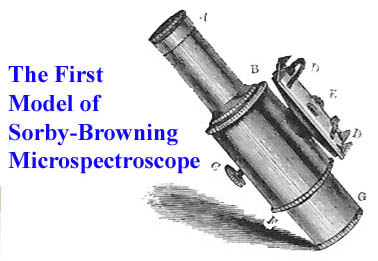 It was Sorby again, who proposed the design of microspectroscope first made by John Browning which became known as the Sorby-Browning Microspectroscope. The original model is shown here to the left. It used a direct vision path of cemented equilateral prisms of alternating flint and crown glass, as in the Jensen-Hoffman design, and provided a side port through which a comparison spectrum could be directed. This instrument is essentially a Huygenian eyepiece with the adjustable slit of the spectroscope positioned between the bottom lens and the eye lens. The prisms are housed in the tube above the eyelens and focusing of the prisms is provided to show the spectrum to best advantage. This became the basis for all microspectroscopes made for next many years.
It was Sorby again, who proposed the design of microspectroscope first made by John Browning which became known as the Sorby-Browning Microspectroscope. The original model is shown here to the left. It used a direct vision path of cemented equilateral prisms of alternating flint and crown glass, as in the Jensen-Hoffman design, and provided a side port through which a comparison spectrum could be directed. This instrument is essentially a Huygenian eyepiece with the adjustable slit of the spectroscope positioned between the bottom lens and the eye lens. The prisms are housed in the tube above the eyelens and focusing of the prisms is provided to show the spectrum to best advantage. This became the basis for all microspectroscopes made for next many years.
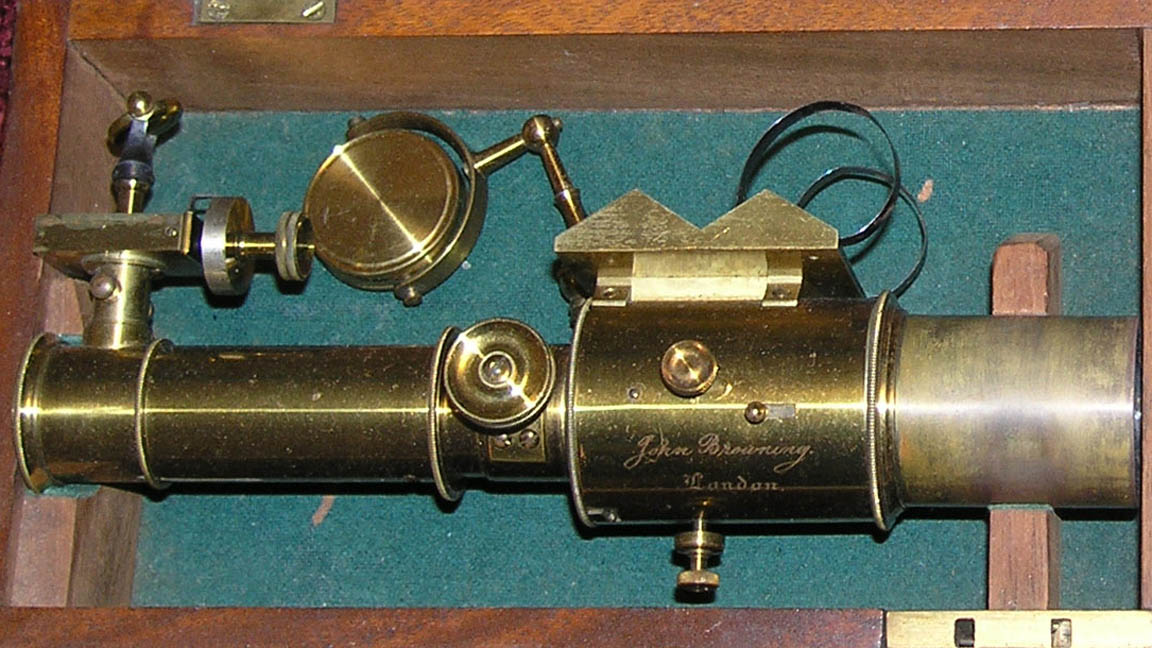
To the right is shown an example with additional optional features including a calibrated scale of wavelength which could be superimposed on the spectrum being studied and a pointer which moved along the scale controlled by a calibrated dial.
References:
1. Donati GB. Intorno alle strie degli spettri stellari [On lines in stellar spectra]. Nuovo Cimento. 1862;
15:292–304. in Italian
2. Janssen PJC. Note sur trois spectroscopes [Note on three spectroscopes]. C.R. Hebd. Seances Acad.
Sci. 1862; 55:576–578. in French.
3. Herschel AS. Direct vision spectroscopes by double internal reflection. Intellectual Observer.
1865; 7:444–447.
4. Anon. On a New Micro-spectroscope. Chemical News, 15 (1867): 220-221.
5. Hogg, Jabez: The Microscope: Its History, Construction and Application. 6th ed, London, 1867: 119-128.
6. Hagen N and Tkacyk TS: Compound prism design principals, I. Appl Opt 2011 50(25) 4998-5011
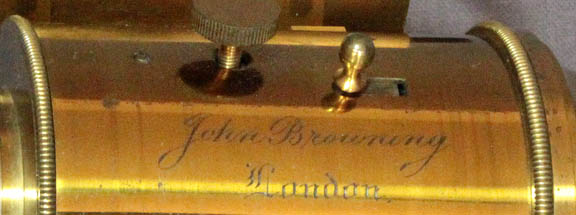 This Sorby-Browning Microspectroscope is signed:
This Sorby-Browning Microspectroscope is signed: 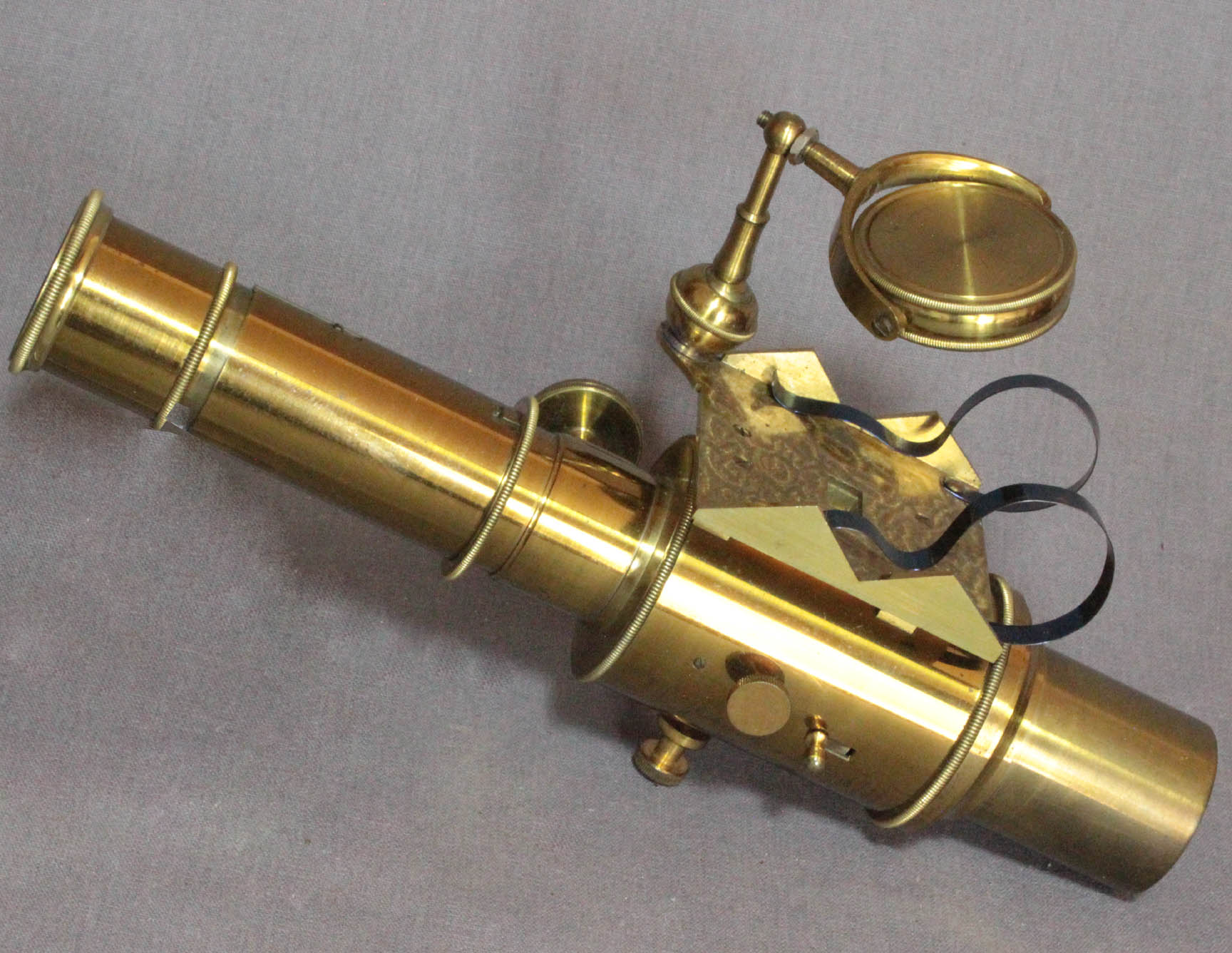

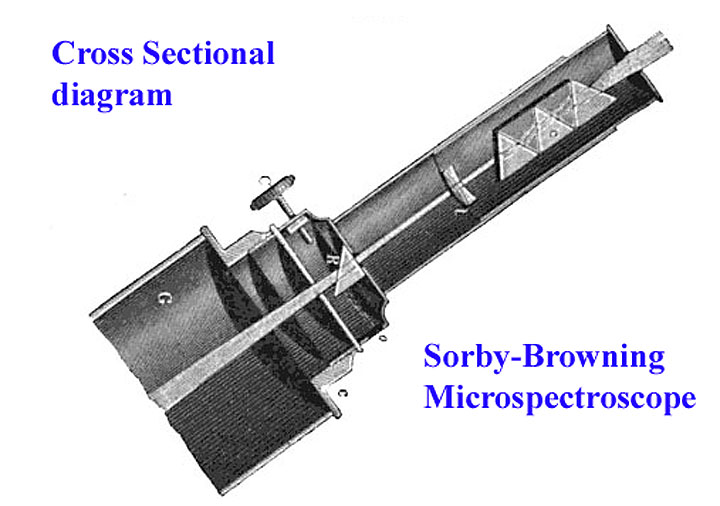
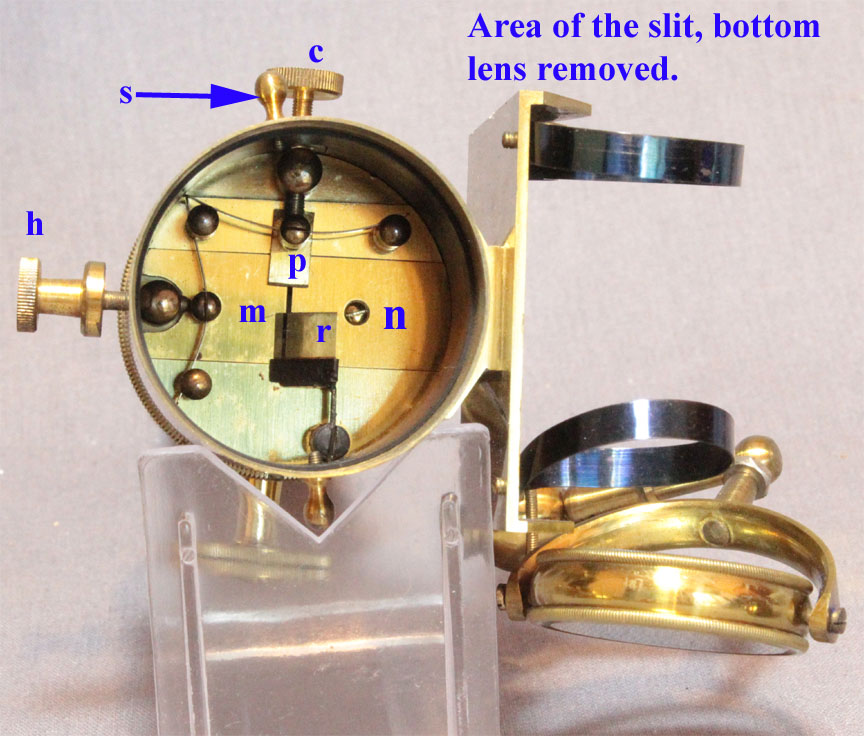
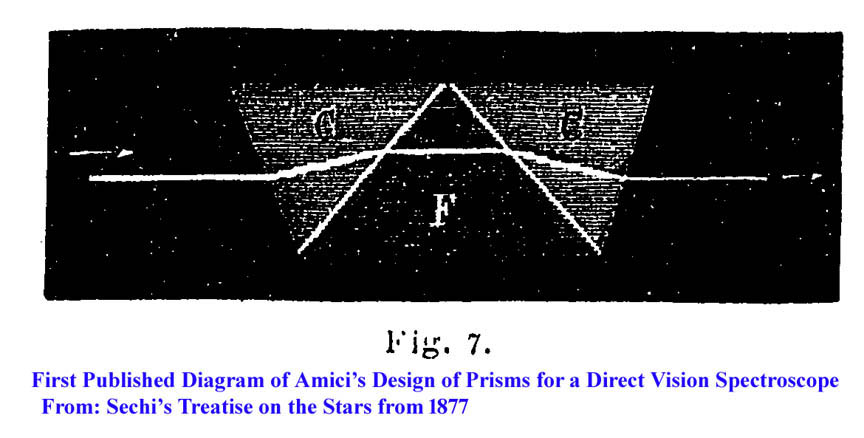 It soon became obvious that the complicated and heavy forms of angled spectroscopes were inconvenient, particularly for travel. In 1860, Geovanni Amici invented a design for a direct vision spectroscope and discussed his idea with Donati. Amici did not publish the design, and Donati was apparently the first to construct it. His manuscript describing it was published in 1862. It used a stack of three equilateral prisms.
It soon became obvious that the complicated and heavy forms of angled spectroscopes were inconvenient, particularly for travel. In 1860, Geovanni Amici invented a design for a direct vision spectroscope and discussed his idea with Donati. Amici did not publish the design, and Donati was apparently the first to construct it. His manuscript describing it was published in 1862. It used a stack of three equilateral prisms. 
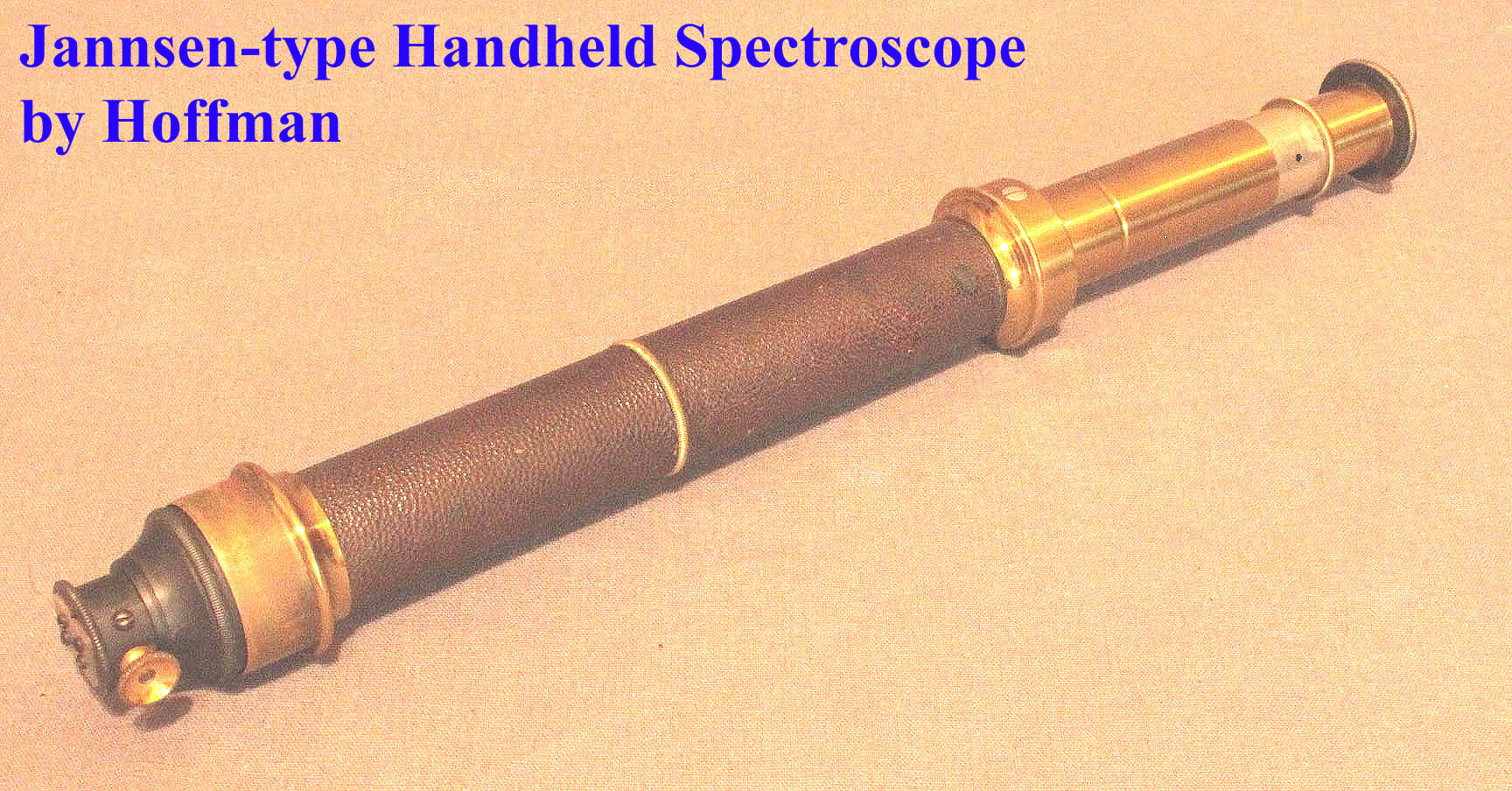
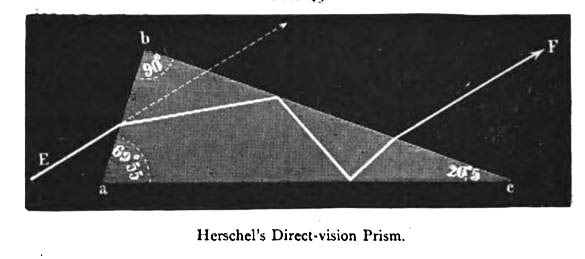
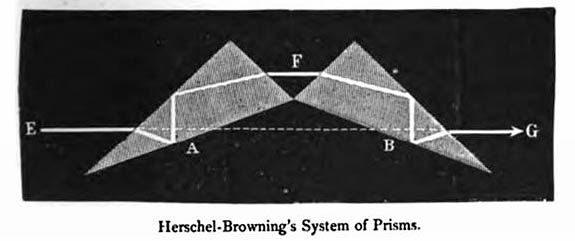
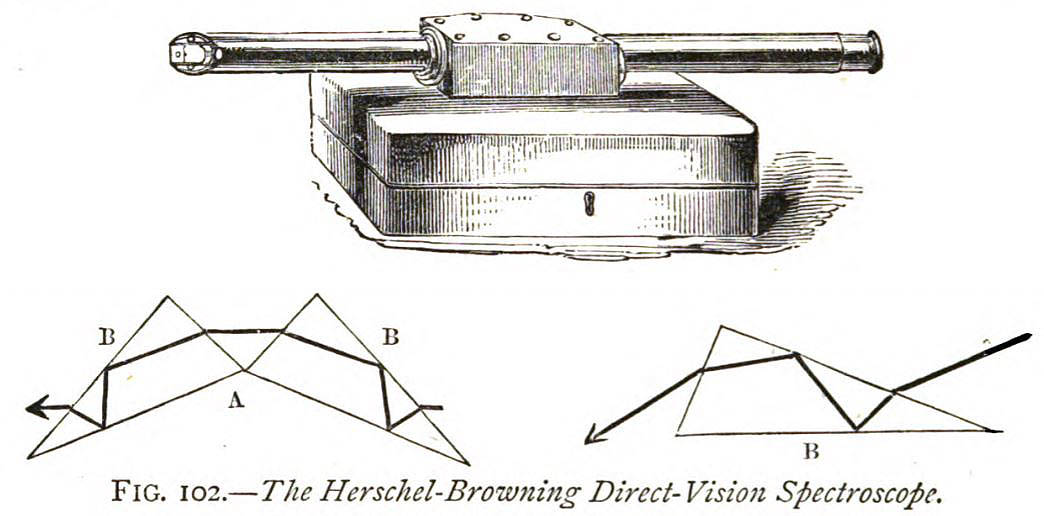

 It was Sorby again, who proposed the design of microspectroscope first made by John Browning which became known as the Sorby-Browning Microspectroscope. The original model is shown here to the left. It used a direct vision path of cemented equilateral prisms of alternating flint and crown glass, as in the Jensen-Hoffman design, and provided a side port through which a comparison spectrum could be directed. This instrument is essentially a Huygenian eyepiece with the adjustable slit of the spectroscope positioned between the bottom lens and the eye lens. The prisms are housed in the tube above the eyelens and focusing of the prisms is provided to show the spectrum to best advantage. This became the basis for all microspectroscopes made for next many years.
It was Sorby again, who proposed the design of microspectroscope first made by John Browning which became known as the Sorby-Browning Microspectroscope. The original model is shown here to the left. It used a direct vision path of cemented equilateral prisms of alternating flint and crown glass, as in the Jensen-Hoffman design, and provided a side port through which a comparison spectrum could be directed. This instrument is essentially a Huygenian eyepiece with the adjustable slit of the spectroscope positioned between the bottom lens and the eye lens. The prisms are housed in the tube above the eyelens and focusing of the prisms is provided to show the spectrum to best advantage. This became the basis for all microspectroscopes made for next many years. 